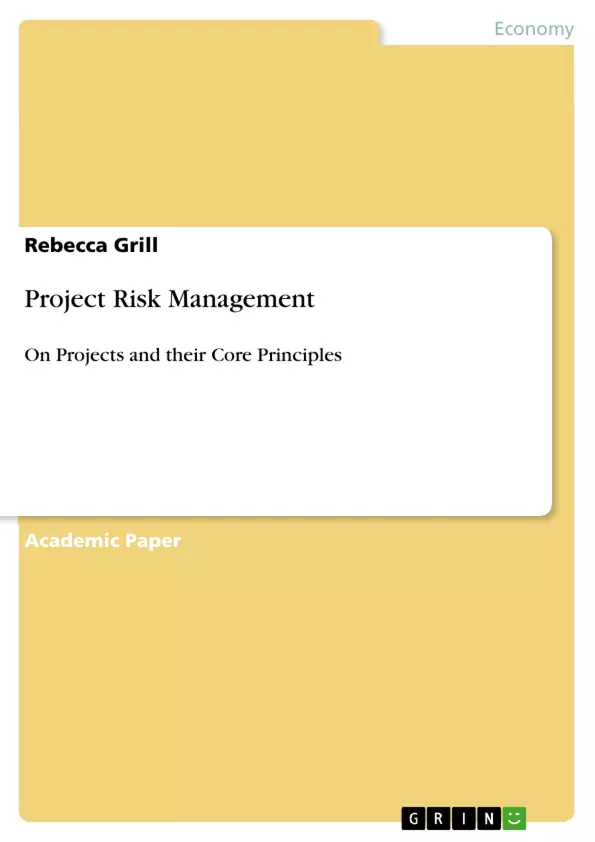The following assignment demonstrates methods, tasks and participants of project management. The first part includes characterizations of projects and useful methods of project management. Concerning to a certain project, the scope, potential risks and methods are described. The second part of the assignment describes a project, its participants and methods used, to guarantee its success. In this aspect a special focus is laid on the project manager, as well as his tasks in project management.
The scope of the project describes the work that needs to be done and includes the main objectives of the project. When planning the time and budget, the possibility of unexpected events are taken in consideration and additional resources such as time and people for team meetings are additionally added.
Risk management deals with the analysis of potential risks and how you have to manage them. There is a wide range of potential risks, for example financial risks, which could be cost overruns or budget cuts. To identify risks, the first step is to assess the likelihood of every risk.
Inhaltsverzeichnis (Table of Contents)
- Executive Summary
- Task 1
- Core principles/characteristics of any project and their importance
- The scope of the project in Task 2
- Project Gantt chart and identification of the critical path
- The Net Present Value
- Project Risk Management of the Project in Task 2
- Quality methods of the Project in Task 2
- Task 2
- Project description
- The Project Manager
- The Team
- Organizational Structure
- Stakeholder
- The Project Lifecycle
- Work Breakdown Structure
- Network plan
- Risk management
- References
- Appendix
Zielsetzung und Themenschwerpunkte (Objectives and Key Themes)
This assignment provides a comprehensive overview of project management methodologies and applications. The paper explores fundamental project characteristics and principles, illustrating these concepts through a specific project example. The primary focus is on the role of the project manager and the processes involved in project success.- Core principles and characteristics of projects
- Project scope definition and planning
- Project management tools and techniques (e.g., Gantt charts, NPV)
- Project risk management and quality control
- Project team dynamics and stakeholder engagement
Zusammenfassung der Kapitel (Chapter Summaries)
- Executive Summary: This section provides a brief overview of the assignment's scope, covering project management principles and practical application in a case study.
- Task 1: This section delves into the core principles and characteristics of any project, emphasizing their importance in successful project execution. It then outlines the scope of a specific project, including time constraints, budget, and objectives. The chapter further examines the project's Gantt chart, critical path, Net Present Value, risk management strategies, and quality control methods.
- Task 2: This section provides a detailed description of a specific project, including its objectives, participants, organizational structure, stakeholders, and project lifecycle. It further explores the work breakdown structure, network plan, and risk management strategies for the project.
Schlüsselwörter (Keywords)
The core keywords for this assignment include project management, project scope, Gantt chart, Net Present Value (NPV), project risk management, project lifecycle, stakeholder engagement, and project team dynamics. These keywords encompass the primary themes and concepts explored in the text, highlighting the importance of comprehensive project planning, execution, and control.- Citar trabajo
- Rebecca Grill (Autor), 2015, Project Risk Management, Múnich, GRIN Verlag, https://www.grin.com/document/468818



